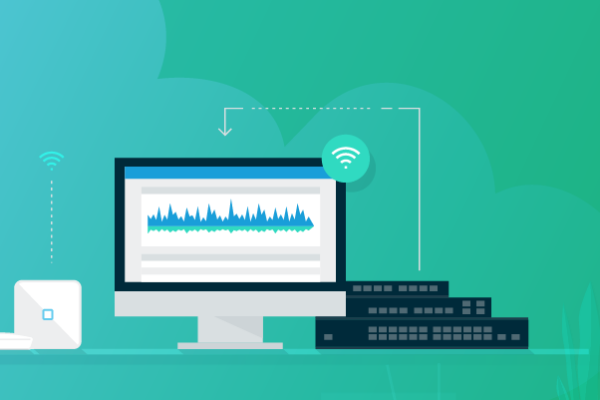What Is Wi-Fi and How Does It Work?
If you’re reading this article now, there is a good chance you’re connected to Wi-Fi. From home Wi-Fi networks to public Wi-Fi access at cafes, airports, and city centers, it seems like wireless internet connection is available nearly everywhere in the United States. Actually, according to TIME Magazine, Wi-Fi currently carries more than 60% of the world’s total Internet traffic.
But, when is the last time you thought about what Wi-Fi really is, and how it works? In this article, we describe the basics, and give some technical details, about what Wi-Fi really is.
What is Wi-Fi?
Let’s start by clarifying that Wi-Fi is different than the internet, although the two terms are often used synonymously.
Instead, Wi-Fi is the wireless networking technology that allows handheld devices (smartphones and wearables), computers (laptops and desktops), and other equipment (gaming systems, printers, and cameras) to access the internet.
Maybe you remember the days of messy local area network cables that used to be the connection from a device to the internet. Wi-Fi operates like these connectors, only wirelessly, and in most cases far more conveniently.
How does Wi-Fi work?
Think about how a portable, home phone works — if you can think back that far.
The portable phone is comprised of three essential parts:
- The cord: which plugs into the wall to establish a phone connection
- The cradle: which receives the phone connection from the cord, and transmits a signal from an antenna
- The phone: which receives the signal sent from the cradle, and allows for two-way communication, as long as you’re within range
The same process mainly describes how Wi-Fi works:
- A cord — usually a fiber cable or an analog line — connects an internet source, such as a broadband modem
- The Wi-Fi router acts as a cradle and receives the internet connection via a wide area network (WAN) port
- The Wi-Fi router shoots a wireless signal via radio waves to a card or an adapter in your computer, phone, or other devices to establish two-way communication
Wi-Fi networks can be exclusively yours
Wi-Fi networks are individually owned and controlled. So, if you have a Wi-Fi network at your house, you can control:
- The name of your network
- The accessibility (if it’s protected or not)
- The password that gives other users access
- Who is connected to your network
You’re also able to turn off connectivity at any time.
Conversely, if you’re at a friend’s house, a local cafe or elsewhere, the only way you can access the available Wi-Fi networks is if they are set to public, or if you have the password to access their network (also called WPA2).
Sending data wirelessly
The general idea of how Wi-Fi works is simple enough. But, when you think about how it’s possible to send data, like a photo, from one computer to another, the process is more mind-bending.
Let’s cover a few terms to give you a more technical look at how Wi-Fi works:
TCP/IP: The internet protocol which specifies how data is broken into transferrable packets, addressed, transmitted, routed, and received for end-to-end data communication.
802 Networking Specifications: IEEE 802 networking specifications help define how TCP/IP functions by establishing standards and protocols for wide local area networks (WLAN), metropolitan area networks (MAN) and wireless networks like:
- Operating procedures
- Protocols and services for networks that carry variable sized packets
- Specifies the development and handling of compatible devices and equipment
The 802 networking specifications specific to Wi-Fi are 802.11, though there are Wi-Fi sub-standards that fall under the set of standards and protocols.
Putting it all together
Keeping the scenario above, let’s say you want to send a photo via email to your friend, how does the process work?
Once your computer has established Wi-Fi connection from communication between your broadband modem, router and computer you can sign on to your email account, attach the photo you want to share, and hit send.
Then through a combination of TCP/IP and 802.11 networking specifications, your data (photo) will be broken into tiny packets of binary code (1’s and 0’s). These tiny packets are sent like Morse code via radio waves.
Because there are so many radio waves flowing through the air, Wi-Fi is transmitted at two different frequencies — based on packet size — to minimize interference:
- 2.4 GHz
- 5.0 GHz
These radio signals travel through multiple routers until the file reaches your friend’s computer.
When it arrives at the recipient, your friend’s router will act as the decoder, reassembling your photo, so that when he or she establishes an internet connection through a broadband modem, router and computer, they can sign on to their email account and view your lovely photo.
Wi-Fi security
As we mentioned earlier, with ownership over your Wi-Fi network, you can control who has access to your line of communication. However, if you send your data through an unsecured Wi-Fi connection, you lose the power of privacy, meaning it’s possible for your data to be intercepted.
If you send personal information like your financial records, access your email account, or send sensitive documents over a public Wi-Fi network, there is a risk your information will land in the wrong hands.
The next time you use Wi-Fi, take a step back and think about the process your data goes through to communicate with others, and take steps to protect yourself from using Wi-Fi dangerously:
- Work from private Wi-Fi networks
- If you own your router, turning on the encryption setting for additional protection
- Only provide your network’s password to people you trust




